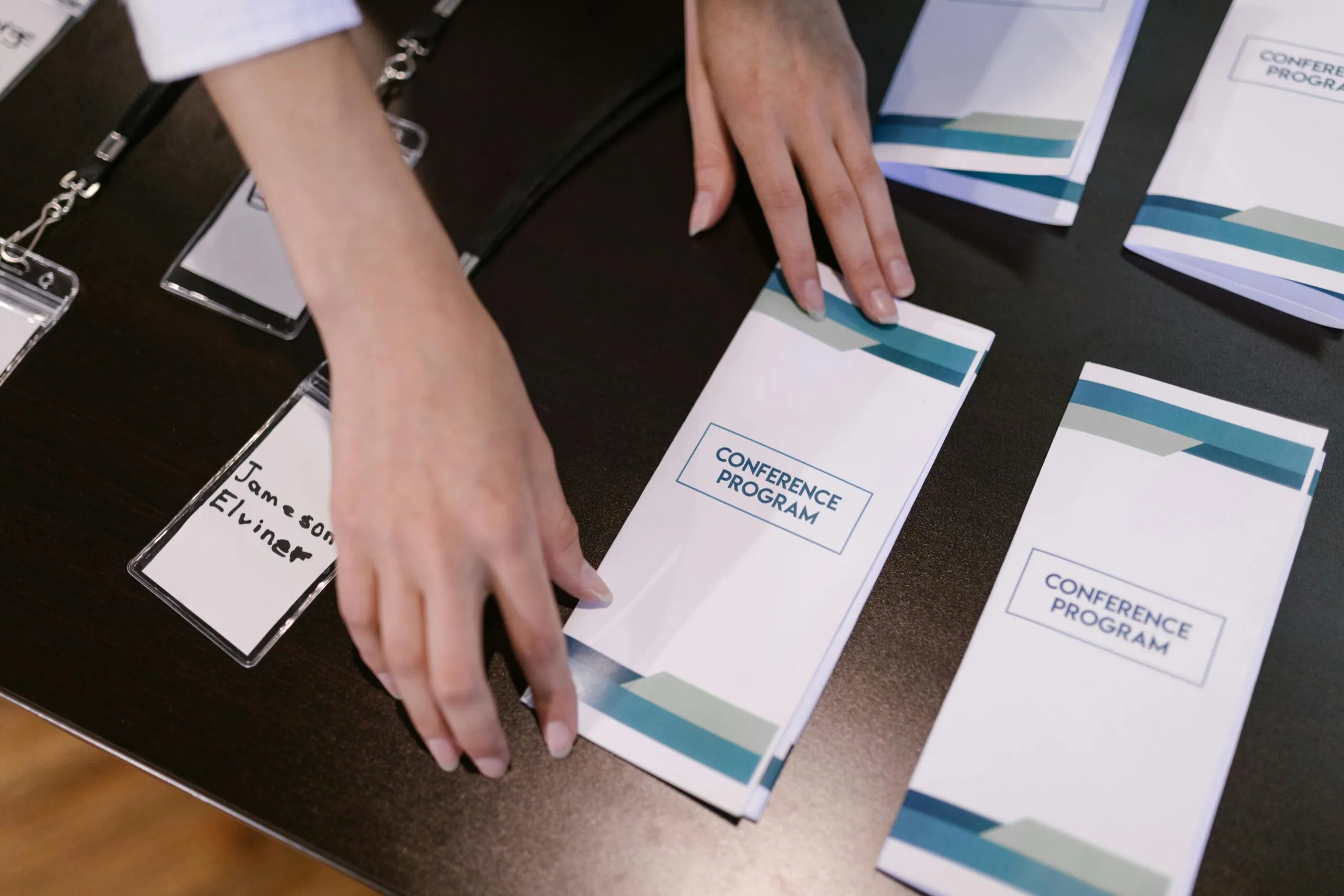
Collecting Post-Event Feedback: Tools and Techniques
November 6, 2025Post-Event Reporting: Best Practices for Corporate Events
Tips and Tricks · 20 November 2025

Organising corporate events is a multifaceted process that doesn’t end when the last attendee leaves or the final speech is delivered. In fact, one of the most important stages is what happens after the event: post-event reporting. This crucial step not only helps measure success but also provides actionable insights that improve future events and demonstrate value to stakeholders. For event organisers, mastering post-event reporting is essential to justify investment, enhance strategies, and build credibility.
In this blog, we will explore the best practices for post-event reporting, covering what to include in your report, how to visualise results to secure stakeholder buy-in, the importance of comparing KPIs against performance data, learning from past events, and the best templates and tools to streamline the entire process.
What Should Go into a Post-Event Report?

A post-event report is your comprehensive recap and evaluation document. It captures everything from the event’s goals to the nitty-gritty details of execution and outcomes. Getting this right means providing a clear, honest picture of what happened and why.
- Event Overview and Objectives: Start your report with a summary that outlines the event’s core purpose, date, venue, and target audience. This background information grounds the report and helps stakeholders recall the event’s context. Without this, the numbers and insights may feel disconnected from the bigger picture.
- Attendance and Engagement Metrics: Provide detailed figures on registrations, actual attendance, session participation, and audience engagement. These metrics reveal how well the event attracted and involved its intended audience. For example, if you had 500 registrants but only 300 attended, this gap deserves exploration.
- Financial Summary: Include a transparent breakdown of your budget versus actual expenses, sponsorship income, and any financial variances. Stakeholders want to see how resources were allocated and whether the event delivered value for money. Highlighting cost overruns or savings helps with future planning.
- Feedback and Satisfaction Scores: Summarise qualitative and quantitative feedback from attendees, speakers, and sponsors. Satisfaction surveys, testimonials, and open-ended comments offer invaluable insights beyond the numbers. Presenting both the highs and lows shows honesty and a commitment to continuous improvement.
- Challenges and Solutions: No event is perfect. Briefly explain any problems encountered whether technical, logistical, or otherwise and how your team addressed them. This section demonstrates your ability to adapt and maintain professionalism under pressure.
Visualising Results for Stakeholder Buy-In

Raw data can be overwhelming and hard to interpret, especially for busy stakeholders. Effective visualisation turns complex information into compelling stories that clearly communicate the event’s impact.
- Use Infographics and Dashboards: Colourful infographics summarise key stats in a visually appealing way, making them easy to digest at a glance. Interactive dashboards, if available, let stakeholders explore data on their own time, fostering engagement and transparency.
- Highlight Trends with Graphs: Line graphs or bar charts showcasing attendance trends, engagement over time, or budget versus spend comparisons provide clarity. Visual cues like red and green colours help immediately flag positive or negative outcomes.
- Combine Qualitative with Quantitative: Pair quotes, testimonials, or photos with numerical data to add emotional depth and context. This combination helps stakeholders feel the event’s atmosphere, not just see the facts.
- Tailor Visuals to Different Audiences: Understand that executives often prefer high-level summaries with clear ROI, while operational teams want detailed breakdowns and granular insights. Customising your visuals for these groups ensures your message lands effectively.
Comparing KPIs Against Performance Data

Key Performance Indicators (KPIs) are essential to measuring how well your event met its goals. Comparing them to actual data highlights successes and areas needing improvement.
- Define KPIs Beforehand: Align KPIs with your organisation’s broader strategic objectives. Typical KPIs for corporate events include attendance rates, lead generation, engagement scores, revenue, and social media reach. Setting these early ensures focused data collection.
- Gather and Validate Data: Use reliable sources such as registration platforms, event apps, survey results, and finance records. Double-check data for accuracy to avoid misleading conclusions. Clean data is the foundation of meaningful analysis.
- Analyse Variances: Compare actual performance against KPI targets and explain discrepancies. Did you exceed attendance goals but fall short on engagement? Investigate why and include this analysis in your report. This insight is crucial for refining future events.
- Focus on Outcomes: Don’t just report numbers and explain what they mean for your organisation. For instance, did a high lead count translate into new business? Drawing this connection strengthens your report’s value proposition.
Lessons Learned: What to Do Differently Next Time

Continuous improvement is at the heart of successful event planning. Reflecting on lessons learned transforms experience into better future results.
- Conduct Comprehensive Debriefs: Bring together all key stakeholders, internal teams, vendors, speakers for candid discussions. Diverse viewpoints help uncover issues you might not have noticed alone. Document these conversations thoroughly.
- Celebrate Successes and Acknowledge Shortcomings: It’s important to recognise what went well alongside what didn’t. This balanced approach encourages motivation while fostering a culture of honesty.
- Develop Clear, Actionable Recommendations: Avoid vague feedback; instead, offer specific steps for improvement. For example, “Implementing a mobile check-in app could reduce queuing times” is a concrete takeaway.
- Share Learnings Organisation-Wide: Disseminate key findings and improvements across your company. Doing so promotes transparency and prevents repeating the same mistakes. It also encourages a shared commitment to excellence.
Templates and Tools to Streamline Reporting

Post-event reporting can be time-intensive. Using the right templates and tools can save time, improve consistency, and enhance report quality.
- Standardised Report Templates: Employ templates tailored for corporate events that cover all essential sections, ensuring nothing is overlooked. Templates also maintain a professional and branded look. Many event management platforms offer these.
- Event Management Software: Platforms like Eventive integrate registration, feedback, and financial data, automating much of the reporting process. This reduces manual errors and frees up time for analysis.
- Visualisation Tools: Use software such as Tableau, Power BI, or Google Data Studio to create dynamic and visually rich reports. These tools allow you to update reports in real time and personalise views for different stakeholders.
- Automate Data Collection: Integrate survey tools and apps that feed data directly into your reporting systems. Automation speeds up the process and improves data accuracy, giving you more time to focus on insights and action plans.
Post-event reporting is a vital component of corporate event success, providing evidence of value and a roadmap for improvement. By including comprehensive data, using engaging visualisations, analysing KPIs in context, reflecting on lessons learned, and leveraging the right templates and tools, event organisers can elevate their reporting and their impact within their organisations.
For corporate event organisers looking to simplify and enhance their reporting processes, Eventive offers powerful, user-friendly solutions tailored to your needs. Our platform integrates data collection, visualisation, and collaboration features designed to help you impress stakeholders and drive continuous improvement.
Ready to revolutionise your post-event reporting? Visit Eventive today to discover how we can help you turn your event data into clear, actionable insights.
Let’s Collaborate.
Get in touch with us for your next event!
We hope you enjoyed this article “Here’s Why Not Hiring an Event Company Could Be a Costly Mistake”. Head on to Our Works to see the events we have managed!
If you are looking to manage an event, then look no further than us.
